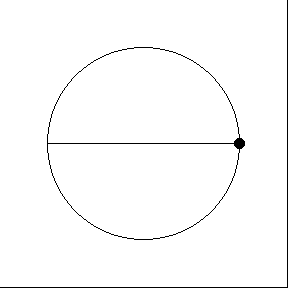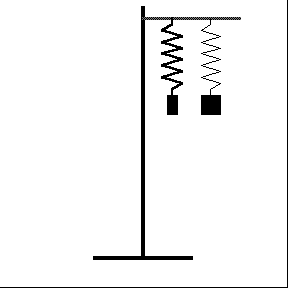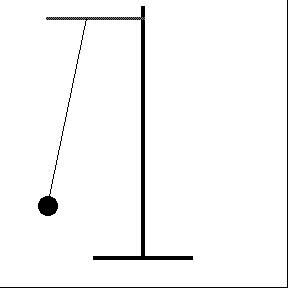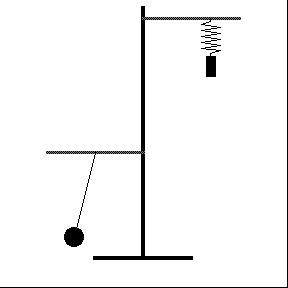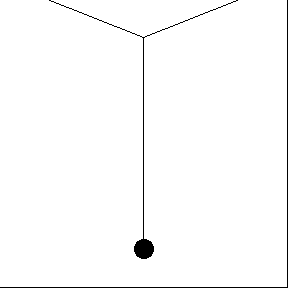100. Simple Harmonic Motion
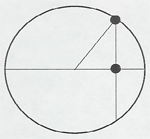


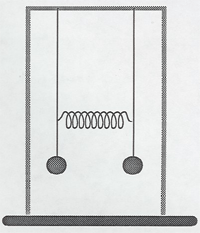


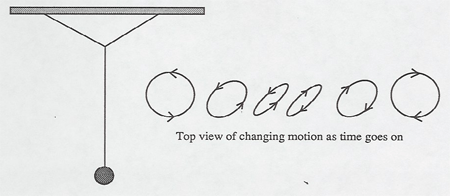
| c. Simple pendulum:
A simple pendulum is on the same device. You could also use the "Faith in Physics" Pendulum, or track a pendulum with a sonic ranger and plot out the sine waves of its motion (see Motion Concepts - Sonic Ranger). |
f. Torsion pendulum: the weights can be moved as shown to change the rotational inertia, and therefore the period.
g. Coupled pendula: Three varieties are available.
- Two pendula coupled by a spring (shown to the right) will show normal modes, and transfer of energy between the single pendula swinging modes.
- A mass on a spring has the vibrating spring mode resonantly coupled to the pendulum mode. This is an example of parametric oscillation. The spring frequency is approximately twice the swinging frequency (pendulum mode). The spring mode parametrically drives the pendulum mode, but the pendulum motion causes the tension in the spring to vary at twice the pendulum frequency, and therefore resonantly drives the spring mode. The transfer of energy between these two modes is impressive.
- A Wilberforce pendulum has the vibrating spring mode coupled to a torsion pendulum mode.
h. Coupled gliders on an air track: Two gliders with three springs, two running to the fixed ends and the third between show normal modes and exchange of energy.
i. Some Unusual Pendula: Suggested by Bruce Denardo
- An inverted pendulum; that is, a vertical stick, free at the top, whose support is vertically vibrated, can be stabilized about a vertical position.

- Precession of a spherical pendulum a spherical pendulum is a conical pendulum set swinging in an ellipse. For small amplitudes the periods along the major and minor axes are almost equal and the ellipse remains stationary in space. But for large amplitudes the ellipse precesses forward because the period for planar pendulum motion on the major axis is somewhat larger than that along the minor axis. (The period of a planar pendulum increases somewhat with amplitude as the small angle small oscillation approximation fails.)
- The Mystery Spot Pendulum is named after a supposed site of gravitational anomaly in Northern California. A conical pendulum first swings in a circle one way, then gradually reverses to circle the other way. (Demystification courtesy of Bob Keolian.)


